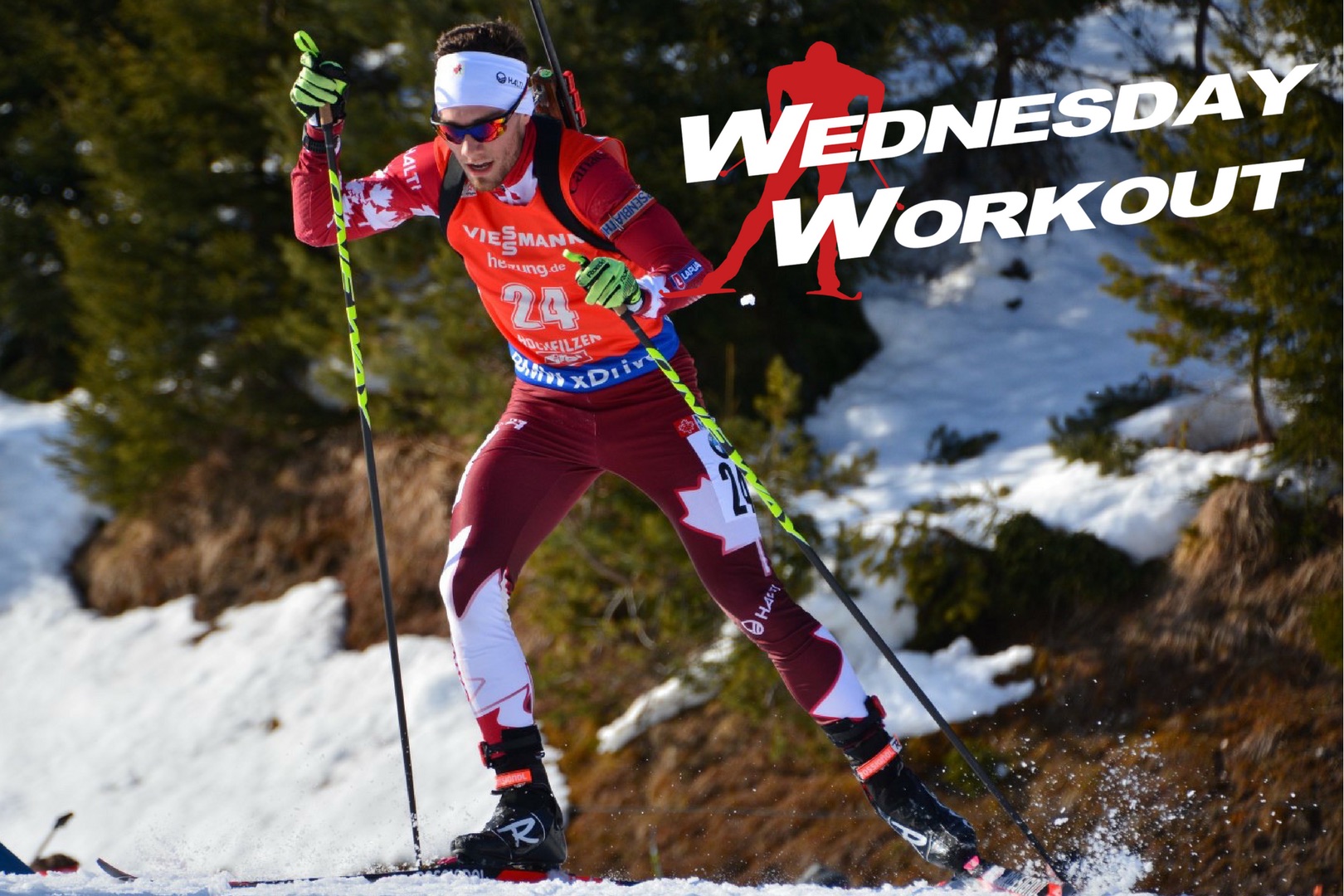
Has a coach ever told you that you should be hot at the start line of your races? That the engine needs to be revved up and ready to go?
Then you might be surprised at the scene before a World Cup biathlon race. While some competitors are jogging around and jumping up and down, others seem to be just standing around for a surprisingly long stretch of time — the opposite of arriving to the start line just beginning to sweat.

That doesn’t mean that the adage to arrive to the line hot is wrong. For you, it might be right. But then again it might not.
“There are guys who you swear don’t warm up at all,” said Canada’s Christian Gow, standing in bib 24 in the photo above. “Especially some of the top guys. It seems like they come, zero, and then basically start the race. It’s pretty mind-blowing. But then other people it seems like they really need a long, hard, warmup, the longer the better even. And everywhere in between. It’s super individualized. I’m sort of a mid-ground. I try to ski a little bit during zero, get some hard effort in, and then go to the race.”
Zeroing — taking some prone and standing shots and getting the rifle’s sights adjusted for accuracy in the day’s conditions — is an added warmup feature in biathlon that skiers don’t have to consider. Athletes ski a few small, or large, loops during the zeroing process. And zeroing also has to take place before the race starts. That means that if you’re an early starter, almost your whole warm-up might be done during zeroing — but if you’re a late starter, you have a long wait between zeroing and actually heading to the start line.
“When you start early like I did today, you can usually just keep warming up on the trail during zero,” Gow explained. “When I’m a later starter I do use the warm-up track.”
So if Gow is a medium warm-up guy, how did he figure that out? Trial and error through the beginning of his career, with added tweaks even after he more or less had a reliable routine.
The message is that while copying a teammate’s warm-up might be a good place to start, you shouldn’t assume that what works for someone else will work for you. Here’s how Gow found his sweet spot, and how you can too.
1. Start now, because it might take a while.
“I started [racing biathlon] when I was 11,” said Gow, who is now 23 years old. “My warmup routine hasn’t changed much in the last five years. So I guess it took seven years or so to get it to where it is today.”
2. Track what you did for a warm-up, and how it made you feel.
“I’ve done races where I just finished warming up and go to the start line in five minutes or less,” Gow said. “Then it’s often that my legs don’t feel great starting.”
But in order to rule out the straight-to-the-start-line mode of warming up, Gow had to be able to make the connection between what he did, and how he felt. If you’re not paying attention or systematically tracking what you did for a warmup — perhaps writing it down in your training log along with your race notes — it will take you longer to figure out your best warm-up.
3. You can stay warm without coming in hot.
“For me, it seems like a little bit of a break between the hard warm-up and the race start is not so bad,” he explained. “Then it’s just a little bit of jogging around, jumping up and down, getting the blood flowing a bit. Nothing too crazy.”
4. Don’t be afraid to adjust.
Although routine is comforting, Gow said that it’s important for him to pay attention to how his body is feeling and adjust his warm-up for each race accordingly. If you’re particularly tired, you might need a shorter warmup than usual. Or a longer warmup. Try to figure that out.
“When things aren’t feeling right or aren’t going the way they normally do, there’s that air of doubt,” he said. “Today, for example, in my zero, I have the same zero routine I do every time. It’s normally more than enough. But today the prone just wasn’t there and [the grouping of shots] wasn’t tight. So I had to shoot more and more and more. Normally race morning isn’t the day to be trying to figure that out. But actually, I ended up shooting clean in the race.”
5. But don’t second-guess yourself.
“Sometimes things don’t go according to plan, but it’s all about how you go into it mentally,” Gow explained. “It’s the same way that some days you get to the race course and your legs just feel awful and you feel awful, and you’re setting yourself up thinking that it’s going to be one of your worst days. But sometimes those end up being your best races. So it’s just being open to different circumstances, and don’t count yourself out or second-guess yourself.”
Chelsea Little
Chelsea Little is FasterSkier's Editor-At-Large. A former racer at Ford Sayre, Dartmouth College and the Craftsbury Green Racing Project, she is a PhD candidate in aquatic ecology in the @Altermatt_lab at Eawag, the Swiss Federal Institute of Aquatic Science and Technology in Zurich, Switzerland. You can follow her on twitter @ChelskiLittle.



